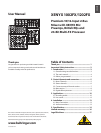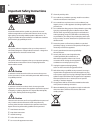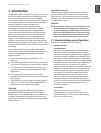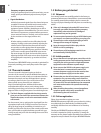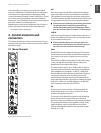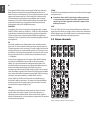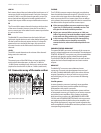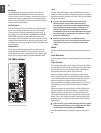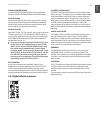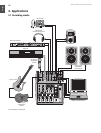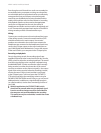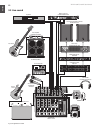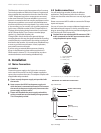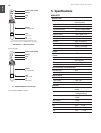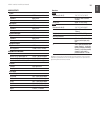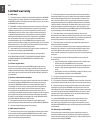
ENGLISH
XENYX 1002FX/1202FX User Manual
6
The upper (HIGH) and the lower band (LOW) are shelving
filters that increase or decrease all frequencies above or
below their cut-off frequency. The cut-off frequencies of the
upper and lower band are 12 kHz and 80 Hz respectively.
The mid band is configured as a peak filter with a center
frequency of 2.5 kHz. Unlike shelving filters, the peak filter
processes a frequency range that extends upwards and
downwards around its middle frequency.
LOW CUT
In addition, the mono channels are equipped with a steep
LOW CUT filter (slope at 18 dB/oct., -3 dB at 75 Hz) designed
to eliminate unwanted low-frequency signal components.
These can be noises created by hand-held microphones,
subsonic noise or plosive sounds created by highly sensitive
microphones.
FX
FX sends enable you to feed signals via a variable control
from one or more channels and sum these signals to a bus.
The bus appears at the console’s FX send output and can be
fed from there to an external effects device. The return from
the effects unit is then brought back into the console on the
stereo channels. Each FX send is mono and features up to
+15 dB gain.
As the name suggests, the FX sends of the XENYX mixing
consoles are intended to drive effects devices (reverb,
delay, etc.) and are therefore configured post-fader. This
means that the mix between dry signal and effect remains
at the level determined by the channel’s aux send,
irrespective of the channel fader setting. If this were not the
case, the effects signal of the channel would remain audible
even when the fader is lowered to zero. With XENYX mixing
consoles, the channel fader is called LEVEL control.
In the 1002FX/1202FX, the FX send is routed directly to
the built-in effects processor. To make sure that the effects
processor receives an input signal, you shouldn’t turn this
control all the way to the left (-oo).
PAN
The PAN control determines the position of the channel
signal within the stereo image. This control features a
constant-power characteristic, which means the signal is
always maintained at a constant level, irrespective of position
in the stereo panorama.
LEVEL
The LEVEL control determines the level of the channel signal
in the main mix.
Attention: Since the FX path for the effect processor ◊
is connected post-fader, the LEVEL control has to be
turned up in order to get this channel’s signal to the
effects processor!
CLIP
The CLIP-LED’s of the mono channels illuminate when the
input signal is driven too high, which could cause distortion.
If this happens, use the GAIN control to reduce the preamp
level until the LED does not light anymore.
Stereo channels2.2
Fig. 2.2: Connectors and controls on the stereo channels



